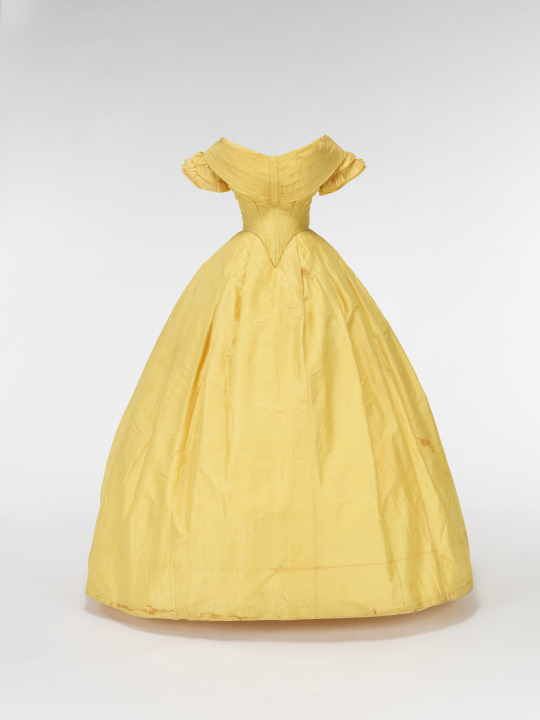True things, pretty things, and hopefully also thoughtful things.
Don't wanna be here? Send us removal request.
Photo

Dior evening dress, 1955
From the Kyoto Costume Institute
649 notes
·
View notes
Text

Day dress, 1891-1900. Jeanne Paquin.
643 notes
·
View notes
Text

~ Jobs for Girls, Hazel Rawson Cades, 1930
#Fair all around XD#I am trying to remember this when I have to deal with yet another difficult person
233 notes
·
View notes
Text


I catch a glimpse of myself on the television screen on the wall that’s airing my arrival live and feel gratified that I appear almost bored. Peeta Mellark, on the other hand, has obviously been crying and interestingly enough does not seem to be trying to cover it up. I immediately wonder if this will be his strategy in the Games. To appear weak and frightened, to reassure the other tributes that he is no competition at all, and then come out fighting. - "You know what my mother said to me when she came to say good-bye, as if to cheer me up, she says maybe District Twelve will finally have a winner. Then I realized, she didn’t mean me, she meant you!” bursts out Peeta. “Oh, she meant you,” I say with a wave of dismissal. “She said, ‘She’s a survivor, that one.’ She is,” says Peeta.
#Oooh#oof#The Hunger Games#Peeta Mellark#Katniss Everdeen#Yay! Fan Art!#UGH. I don't know why something got added to my reblog - that was not intentional! Sorry about that. :">
8K notes
·
View notes
Photo

Lanvin dress, 1909
From the Museum of Fine Arts, Houston
451 notes
·
View notes
Text

1996 Wishbone Stickers (via: eBay)
4K notes
·
View notes
Photo


Riza hawkeye
2K notes
·
View notes
Text
1895 Cotton Piqué Seaside Dress.
(Image via Museum at FIT and Mimi Matthews)

965 notes
·
View notes
Text

I'm rewatching Sleeping Beauty for the first time since I was, like, four. I'm honestly surprised by how much I'm enjoying it.
48 notes
·
View notes
Photo


READ MY BOOKSHELF | the witch of blackbird pond by elizabeth george speare
“From that first moment, in a way she could never explain, the Meadows claimed her and made her their own. How often she would come back she had no way of foreseeing, nor could she know that never, in the months to come, would the Meadows break the promise they held for her at this moment, a promise of peace and quietness and of comfort for a troubled heart.”
56 notes
·
View notes
Text



Evening dress made of pattern-woven light blue silk damask with motifs of lilies of the valley and leaves, decorated with wavy pleated silk borders, pearl borders and pearl embroidered flowers with large pearl pendants, 1860s.
Gothenburg City Museum
456 notes
·
View notes
Text
March Update:
(1) Book for the Association Reading Challenge Sylvia's Lovers by Elizabeth Gaskell
(1) Children's/Juvenile Reread The Magicians of Caprona by Diana Wynne Jones.
(1) YA Reread The Shadow of the Bear by Regina Doman.
(1) Fiction Reread The Paradoxes of Mr. Pond by G. K. Chesterton
(1) Classics Reread Pride and Prejudice by Jane Austen
(1) French Language Book
(1) WWII Book Into the Forest by Rebecca Frankel
(1) Charles Dickens Book Nicholas Nickleby
(1) Tolkien History Book The War of the Jewels
(1) Non-fiction Book off the To-Read Shelf The Little Guide to Music Appreciation by Helen L. Kaufmann
(1) Fiction Book off the To-Read Shelf Behind Every Man: The Nancy Cooper Russell Story by Joan Stauffer
(1) Non-fiction Book off the Library To-Read Shelf Precious: The History and Mystery of Gems Across Time by Helen Molesworth (on the to-read shelf ~0.5 years)
(1) Fiction Book off the Library To-Read Shelf The Lost Library by Rebecca Stead and Wendy Mass (officially on the to-read shelf ~0.17 years; unofficially, ~0.5 years)
(1) E-book
(1) Audiobook
Total: 12/15
Tea and Ink Society
January: A classic you discover in a used bookstore thrift store - Sylvia's Lovers by Elizabeth Gaskell October February: A Jane Austen novel - Pride and Prejudice by Jane Austen March: A classic about immigrants or pioneers - I'm counting Croatan by Mary Johnston
2025 Book List
(1) Book for the Association Reading Challenge
(1) Children's/Juvenile Reread
(1) YA Reread
(1) Fiction Reread
(1) Classics Reread
(1) French Language Book
(1) WWII Book
(1) Charles Dickens Book
(1) Tolkien History Book
(1) Non-fiction Book off the To-Read Shelf
(1) Fiction Book off the To-Read Shelf
(1) Non-fiction Book off the Library To-Read Shelf
(1) Fiction Book off the Library To-Read Shelf
(1) E-book
(1) Audiobook
I'm also contemplating doing some variant on the Tea and Ink Society 2025 reading challenge after being sent it as there could be some overlap and it would also align with some of my general reading goals.
#Now the hard ones are left - probably will slow down on progress and these updates in general#2025 Book List
15 notes
·
View notes
Photo


Dress ca. 1912
From the John Bright Historic Costume Collection
498 notes
·
View notes
Text



A lamé and beaded evening dress
c. 1910-1911
Label: Chas. H. Fox London
Kerry Taylor Auctions
716 notes
·
View notes
Text

When I said I was going to draw them in the style of Helen Oxenbury… I actually meant that. 😂
Check out my watercolour brushes for Procreate: https://jennydolfenart.gumroad.com
#Okay this is adorable#I feel like I should know Helen Oxenbury - did she do Carl the Dog???#Nope - though I think I recognise the Clap Hands book#ah well#Yay! Fan Art#The Stormlight Archive#Brandon Sanderson
912 notes
·
View notes
Text

Dress, mid-19th century
From the Metropolitan Museum of Art
631 notes
·
View notes
Photo




Worth evening dress, 1893-94
From Les Arts Décoratifs
1K notes
·
View notes